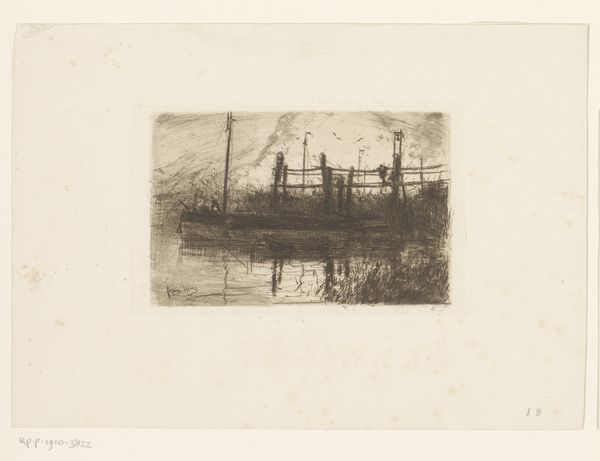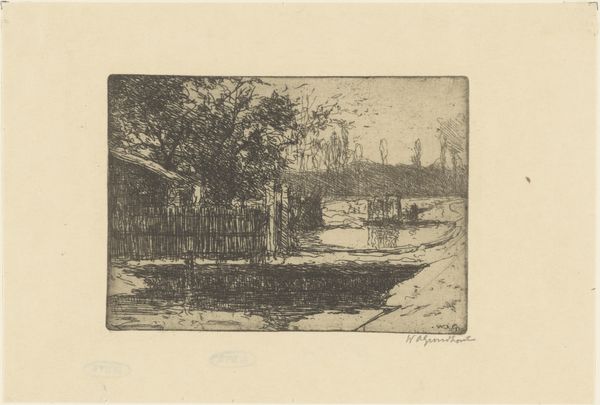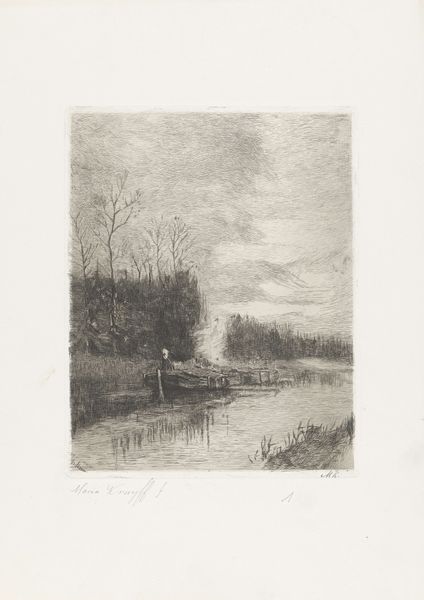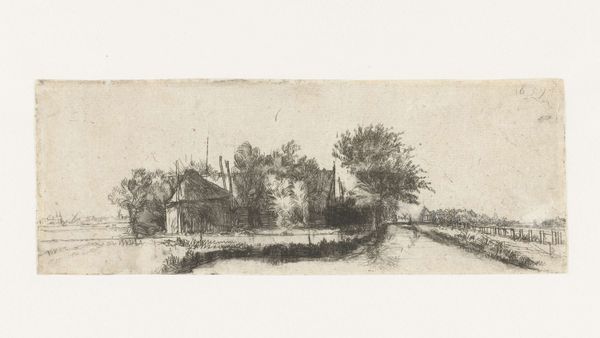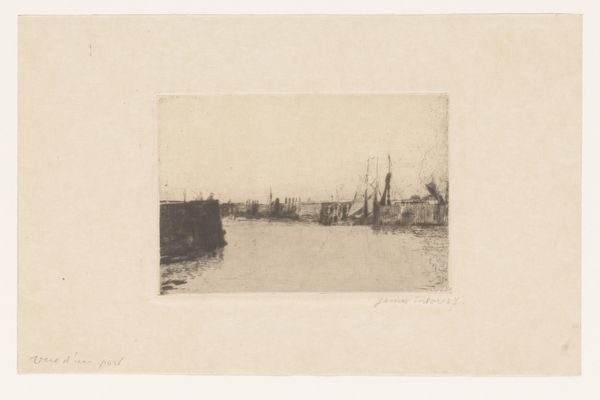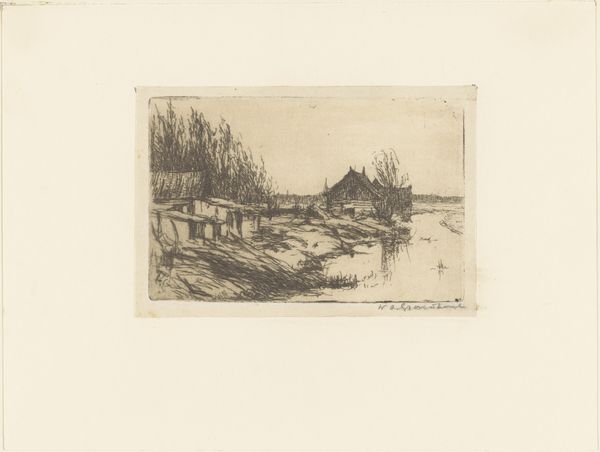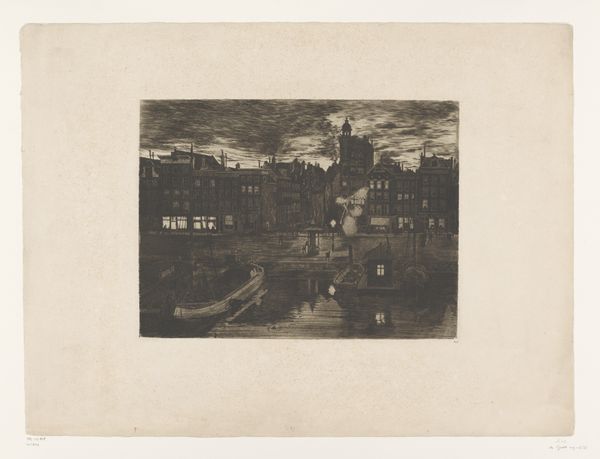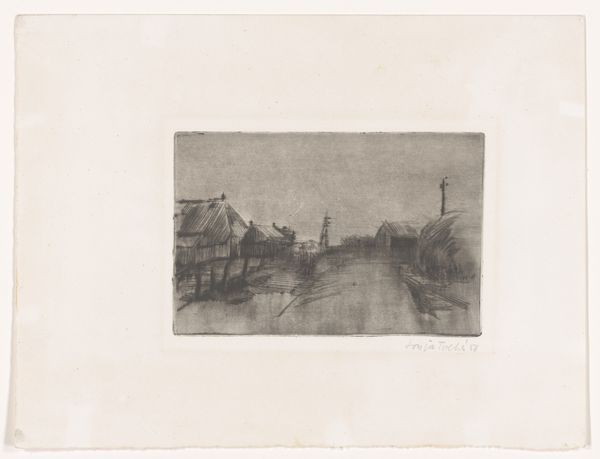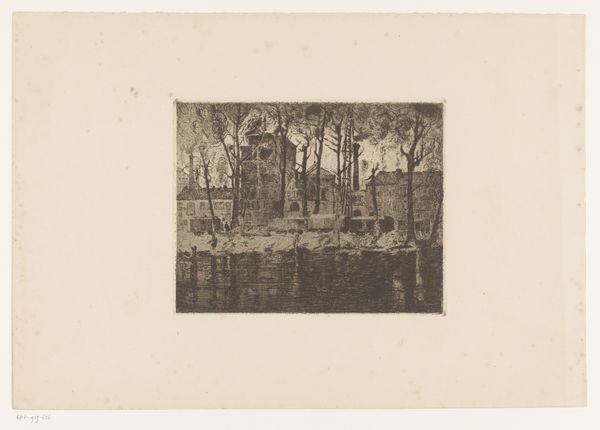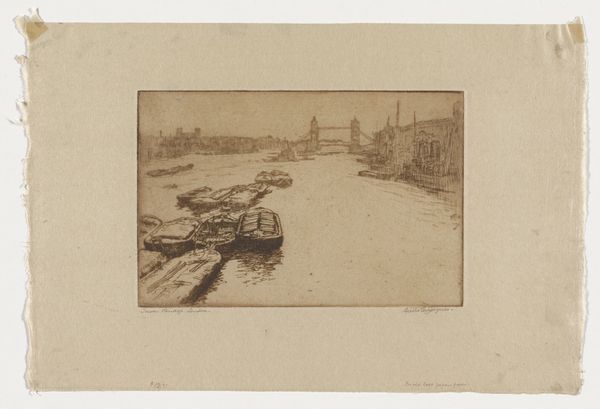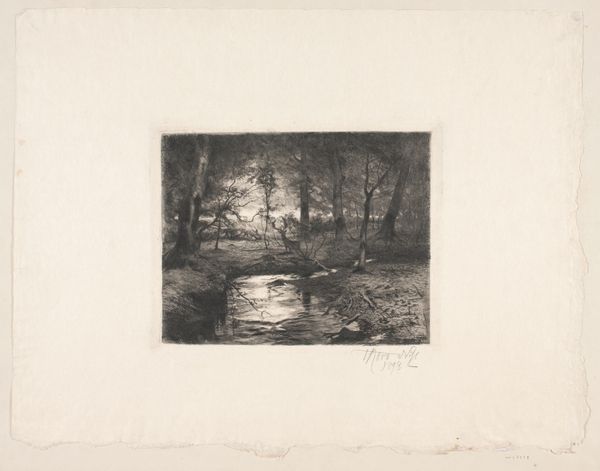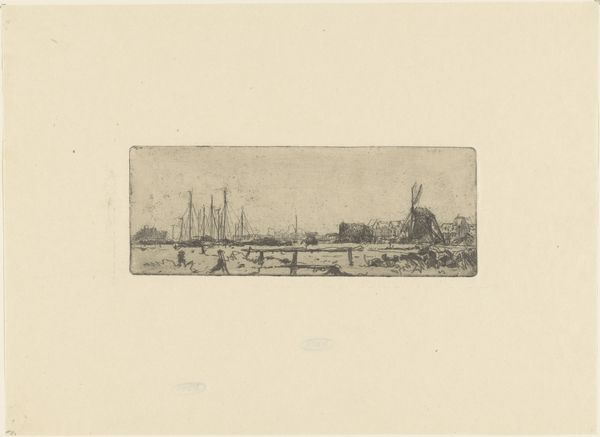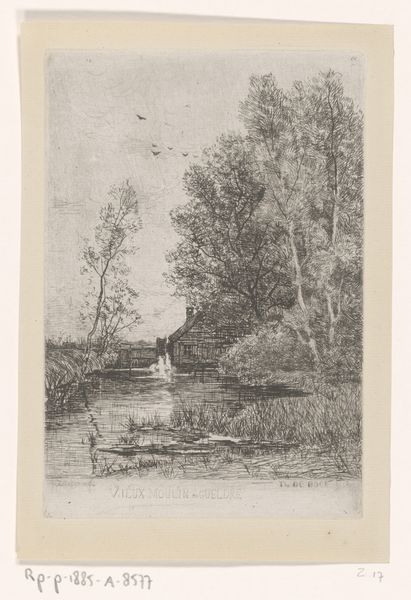
Dimensions: height 155 mm, width 222 mm
Copyright: Rijks Museum: Open Domain
Willem Weissenbruch made this drawing, titled Polderlandschap met brug, with pencil on paper. The image presents a flat, watery landscape, a polder, typical of the Netherlands. Weissenbruch was a prominent figure in the Hague School, a group of Dutch artists active in the late 19th century. This group of artists rejected the academic tradition of the time and sought to represent the natural world in a more realistic and immediate way. The polder landscape, with its windmills and wide-open skies, became a central motif for these artists. This image evokes the quiet simplicity of rural life, but it also reflects the complex relationship between the Dutch people and their environment. The polders are, after all, man-made landscapes, created through centuries of draining and land reclamation. To truly understand this drawing, we need to research the economic and social history of the Netherlands, looking at archival maps, engineering reports, and agricultural surveys to understand how these landscapes were created and transformed over time.
Comments
No comments
Be the first to comment and join the conversation on the ultimate creative platform.
